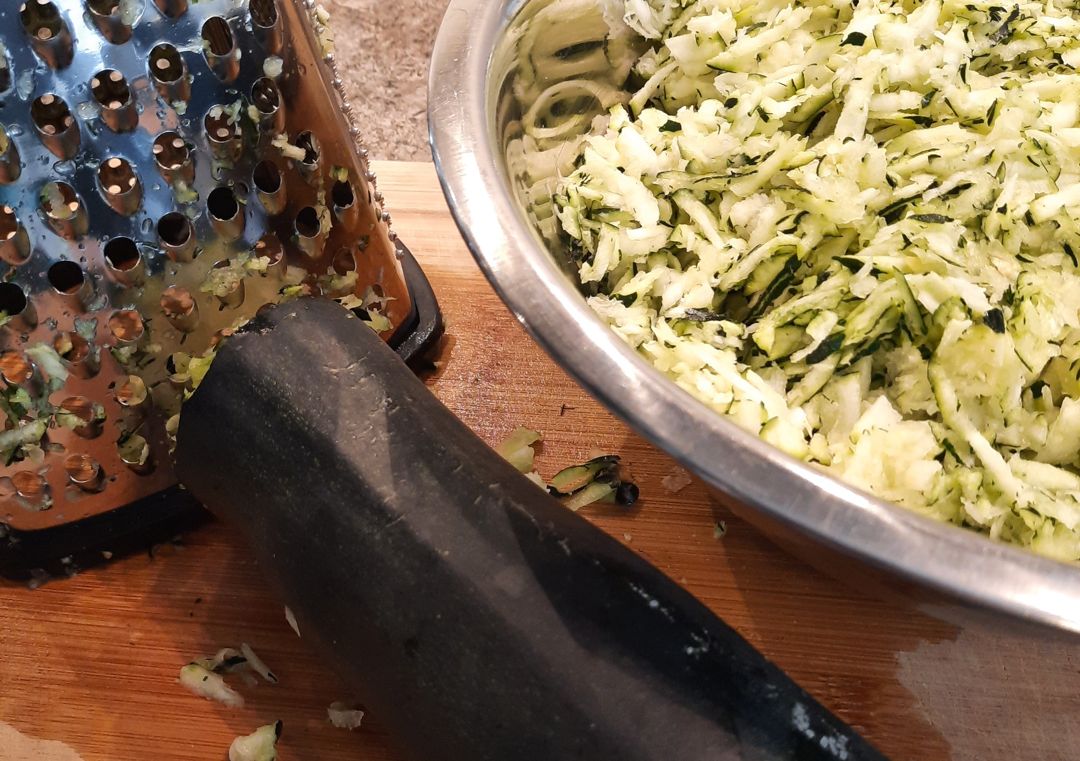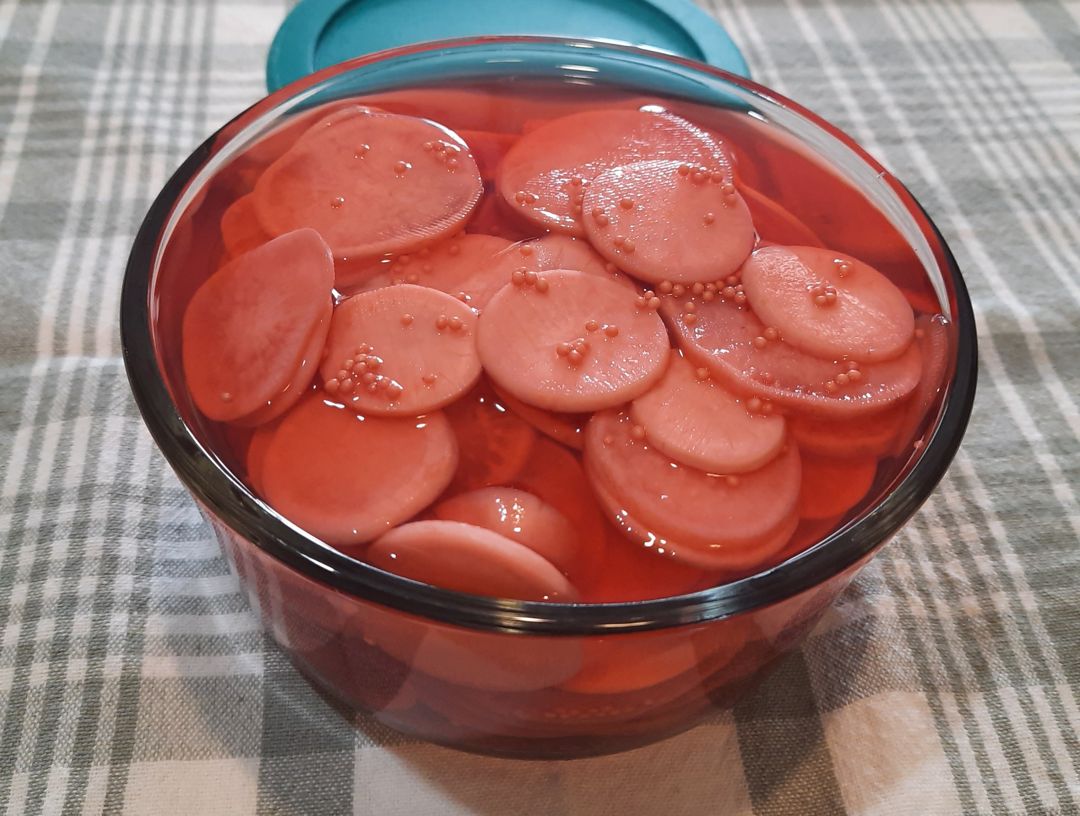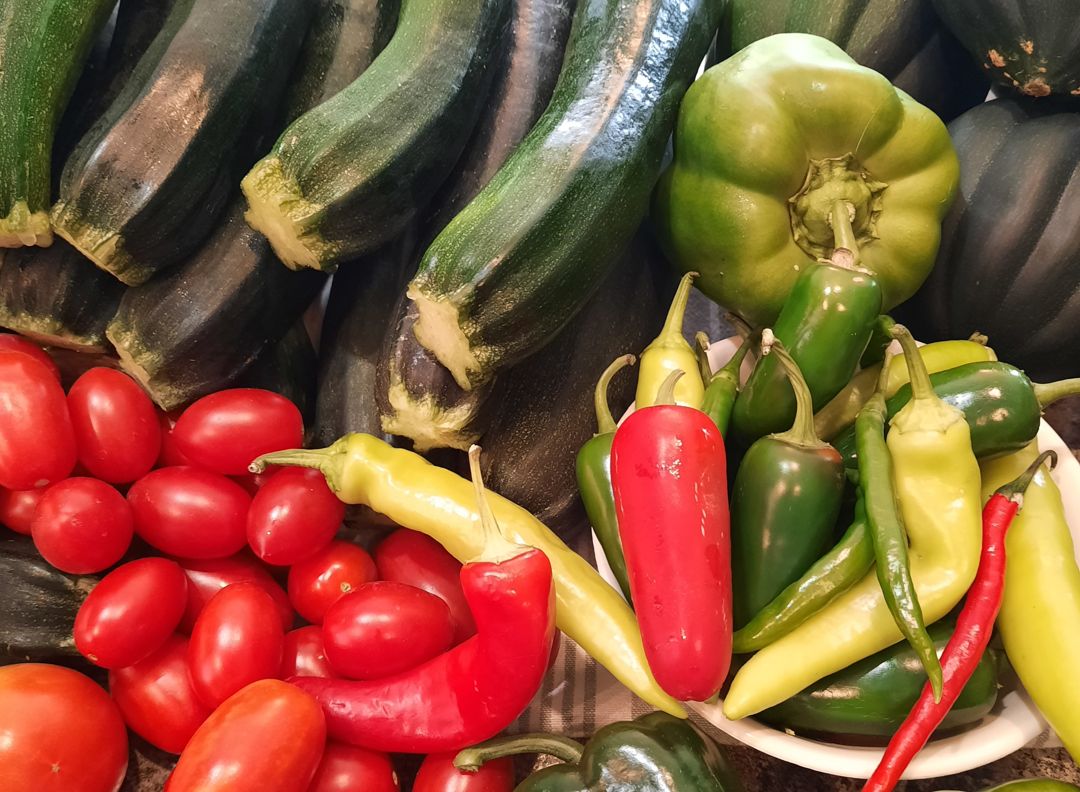Early in the growing season, finding one ripe tomato or pepper feels like finding a precious gem. As the season carries on it can get to a point where it’s hard to keep up with everything your plants produce (…I’m looking at you, zucchini). But if you stop harvesting, your plants might stop producing or you could end up with veggies going bad right on the plant. As gardeners we sometimes need to get a bit resourceful to find ways to use up an extra-abundant harvest!
Cook with the harvest
While salads are an obvious option to make use of greens and veggies, it can sometimes get boring to eat salad with every meal! To use up more produce in your everyday cooking, look for dishes where you can add just about any veggie that needs to get eaten pronto. Pasta, fried rice, chili, fajitas, stir fries, roasted veggies, soups and stews are all dishes where you can easily incorporate the veggies you have on hand. Creating your own sauces and salsas is also a great way to use up a bounty of tomatoes, herbs, and chilies. Also, look for ways to swap in veggies in place of other ingredients- think zucchini noodles, lettuce wraps, or eggplant burgers.
When it comes to cooking with your garden produce, don’t feel constrained by specific recipes or dishes you are familiar with. Be creative and invent your own new favorite dishes!
Storing produce long-term
While canning is an excellent way to preserve huge amounts of produce long past season’s end, it can be daunting for newbies and does involve a fair bit of work. If you are feeling inspired to start canning, be sure to check out our introductory canning guide! But don’t worry if you’re not ready to take up canning just yet, there are still plenty of ways to preserve your garden produce.
Freezing is one of the best ways to store many different types of veggies. Wash and chop up greens such as kale and spinach, before portioning them into plastic bags and freezing them to easily throw into recipes as needed. Peppers also freeze remarkably well- smaller peppers such as serranos, cayennes and jalapenos can be frozen whole, then pulled out and cut up while they are still semi-frozen. For larger peppers you may want to cut them into strips or chunks first before freezing as this is easier than trying to remove the seeds and cores as they thaw out. Some veggies such as broccoli, beans and peas are best blanched in boiling water before being frozen on baking sheets then stored in freezer bags. Others, such as zucchini and squash, are best grated or cubed up before portioning into freezer bags, so you can easily defrost and cook with them (zucchini bread, anyone?)

Drying and dehydrating are relatively hands-off ways to store produce for the long haul. Even if you don’t have a dehydrator kicking around in your kitchen, you can still preserve plenty of things just by air-drying- especially for herbs and spices. Wash your herbs if needed, then pat dry and leave them on drying racks or bunch them and hang them to dry in a place where they will get plenty of airflow. You can also use your oven at low temperature as a dehydrator- look for recipes specific to the veggies you want to dehydrate.
Pickling and fermenting are also both great options for preserving veggies. There are lots of ‘refrigerator pickle’ and ‘quick pickle’ recipes for all kinds of different veggies- cucumbers, radishes, carrots, jalapenos, and beets, just to name a few. So long as you follow a reliable recipe, refrigerator pickles will keep for quite some time in the fridge even though they haven’t gone through the canning process. And while fermentation can get a bit technical, try easing into it with a super-basic sauerkraut recipe.

Other use-it-up ideas
If you can’t make it through the bounty just by cooking and preserving it, there are lots of other ways to make use of your crops. Of course you can always share with friends, family, and neighbors, or perhaps look to swap produce with fellow gardeners. Some food pantries also accept fresh food donations- be sure to call ahead to confirm that your produce will be accepted before dropping by.
You may want to try your hand at creating natural dyes with your garden produce. Or, if you are totally done with harvesting, you can leave your veggies growing long enough to be able to save seeds for next year (note that seed saving works best with heirloom varieties).
If you still can’t make it through your veggies fast enough, use the spoiled produce to create compost for your garden. Turning would-be waste into compost for your garden will help nourish your soil and ensure your future plants are healthy and productive.
Having a glut of veggies to deal with is always a good problem to have! With a little effort, you can make sure none of your precious garden produce is thrown away. (And when you’re planning next year’s garden in Planter, you can always re-evaluate…do I really need three zucchini plants?)
